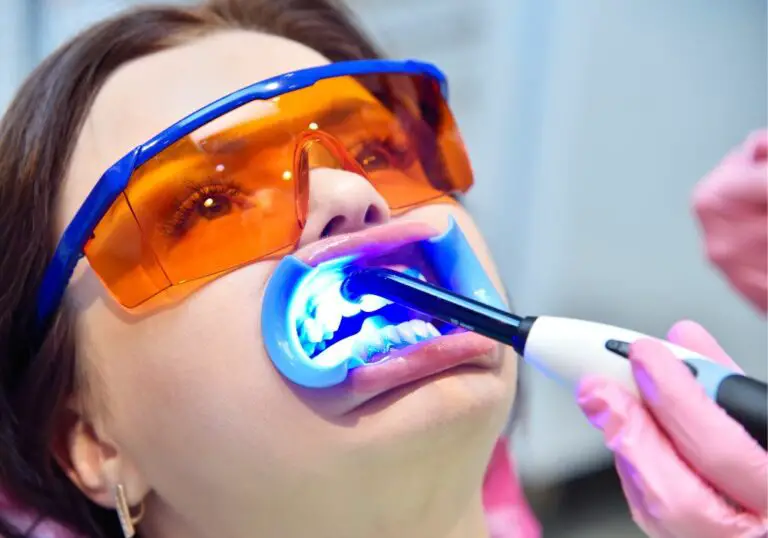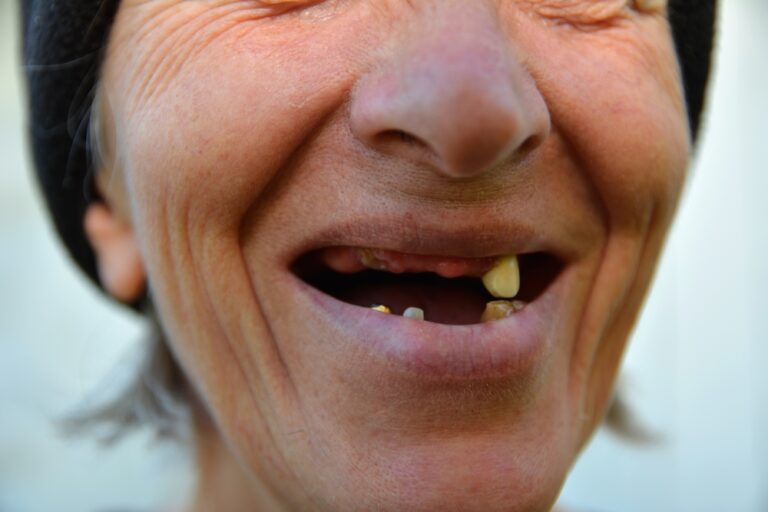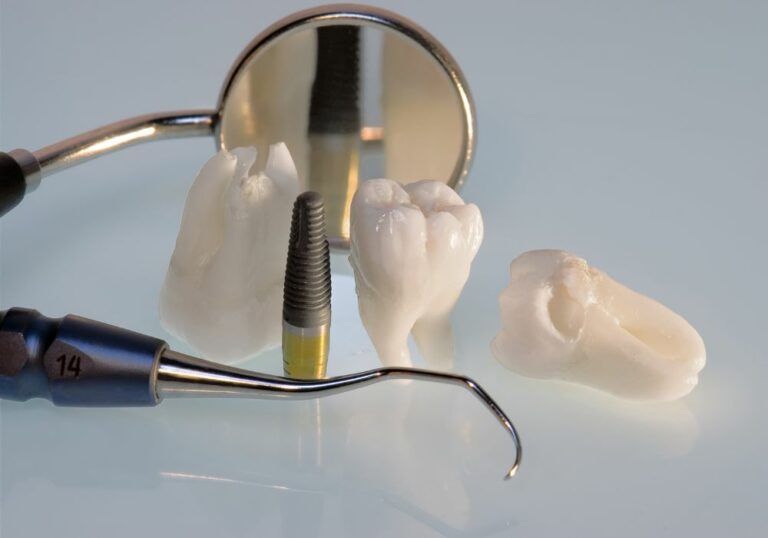Have you ever noticed a white substance on your gums that you could scrape off? If so, you’re not alone. Many people have experienced this phenomenon, and it can be quite alarming. But what is this white stuff, and is it something to be concerned about?
One possible explanation for the white substance is leukoplakia, a condition in which thickened, white patches form on the gums, cheeks, tongue, or bottom of the mouth. These patches cannot be scraped off and may be a sign of precancerous cells. However, not all cases of leukoplakia are cancerous, and a dentist can help determine the cause and appropriate treatment. Another possible cause of white stuff on the gums is plaque buildup, which can be removed by brushing and flossing regularly and visiting the dentist for professional cleanings.
Understanding Oral Health
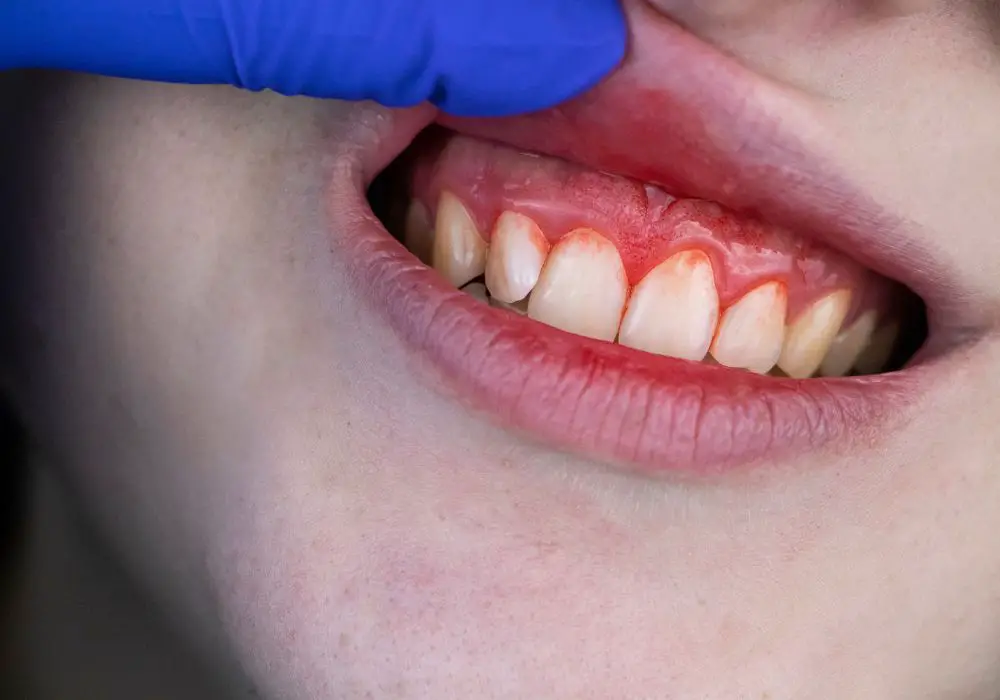
Taking care of your oral health is crucial for maintaining a healthy mouth and overall well-being. Your mouth is full of bacteria, which can cause various dental problems if left unchecked. The most common dental problems include cavities, gum disease, and bad breath.
To maintain good oral health, you should practice good oral hygiene habits such as brushing your teeth twice a day, flossing daily, and using mouthwash. Additionally, you should visit your dentist regularly for check-ups and cleanings.
Your diet also plays a significant role in your oral health. Eating a balanced diet that includes plenty of fruits and vegetables and limiting sugary and acidic foods can help prevent tooth decay and gum disease.
It’s important to be aware of any changes in your mouth, such as white spots or patches on your gums. These could be a sign of a dental problem that requires attention from your dentist.
Overall, taking care of your oral health is an essential part of maintaining a healthy body. By practicing good oral hygiene habits and maintaining a healthy diet, you can prevent dental problems and keep your mouth healthy.
What Is The White Stuff On My Gums
If you’ve noticed white stuff on your gums, it’s important to understand what it could be. There are several potential causes, and some may require treatment. Here are some possible explanations for the white stuff on your gums:
Leukoplakia
Leukoplakia is a condition that can cause white patches to appear on the gums, tongue, or cheeks. These patches cannot be removed with a toothbrush and may feel rough or thickened. While leukoplakia is usually harmless, it can sometimes be a precursor to oral cancer. If you have white patches that don’t go away, it’s important to see a dentist or doctor for an evaluation.
Oral Thrush
Oral thrush is a fungal infection that can cause white patches to appear on the gums, tongue, and other areas of the mouth. It’s more common in people with weakened immune systems, such as those with HIV or undergoing chemotherapy. Treatment for oral thrush typically involves antifungal medications.
Plaque
Plaque is a sticky film of bacteria that can build up on teeth and gums. When plaque hardens, it becomes tartar, which can appear as a white or yellowish deposit on the teeth or gums. Tartar can lead to gum disease and other oral health problems if left untreated. Regular brushing, flossing, and dental cleanings can help prevent plaque buildup.
Debris
Sometimes, the white stuff on your gums is simply debris that has accumulated in the mouth. This can include food particles, dead cells, and other materials. Regular brushing and flossing can help remove debris and prevent it from building up on the gums.
Other Causes
There are other potential causes of white stuff on the gums, including canker sores, lichen planus, and more. If you’re unsure what’s causing the white patches on your gums, it’s best to see a dentist or doctor for an evaluation. They can help determine the underlying cause and recommend appropriate treatment if necessary.
Possible Causes Of White Stuff On Gums
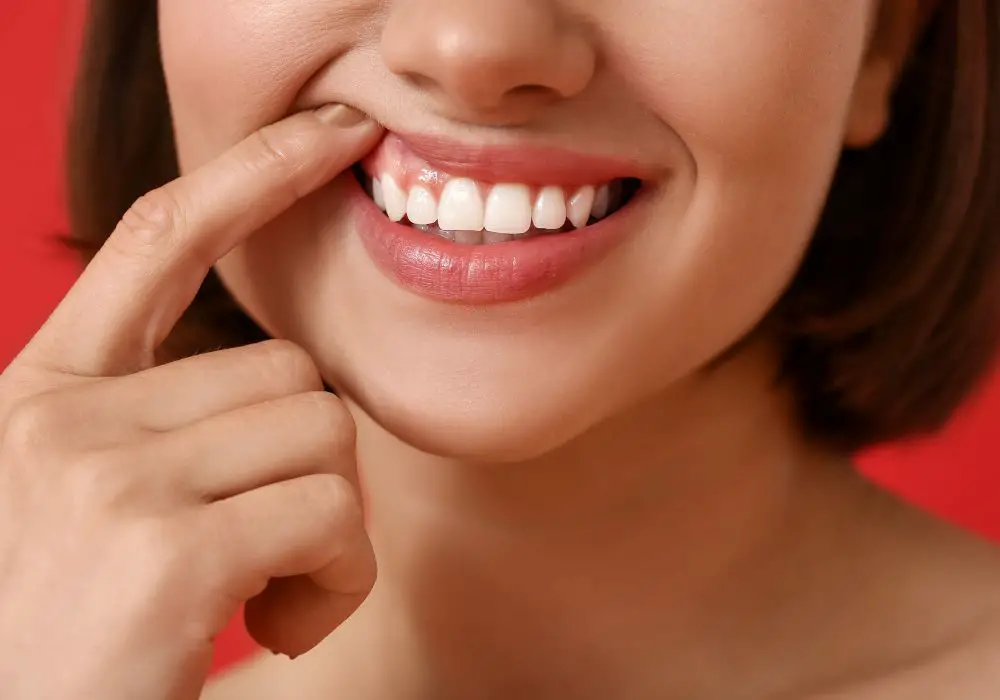
If you have noticed white stuff on your gums that you can scrape off, it could be due to a number of reasons. Here are some possible causes of white stuff on gums:
Plaque And Tartar
Plaque is a sticky film of bacteria that forms on your teeth and gums. If it’s not removed through brushing and flossing, it can harden into tartar. Tartar buildup can cause white or yellowish spots on your gums, which can be scraped off. Regular dental cleanings can help prevent plaque and tartar buildup.
Oral Thrush
Oral thrush is a fungal infection that can cause white patches on your gums, tongue, and other areas of your mouth. It’s more common in people with weakened immune systems, such as those with HIV/AIDS or cancer, or those taking certain medications. Treatment usually involves antifungal medications.
Leukoplakia
Leukoplakia is a condition in which thick, white patches form on your gums, tongue, and other areas of your mouth. It’s usually caused by irritation from tobacco use, alcohol use, or rough teeth. Leukoplakia can sometimes be a precancerous condition, so it’s important to see your dentist if you notice any white patches in your mouth.
Gingivitis
Gingivitis is a mild form of gum disease that can cause inflammation and redness of your gums. It’s usually caused by poor oral hygiene, such as not brushing or flossing regularly. If left untreated, gingivitis can progress to more serious forms of gum disease. Treatment usually involves improving your oral hygiene habits and seeing your dentist for a professional cleaning.
It’s important to see your dentist if you notice any white patches on your gums or other areas of your mouth. Your dentist can help determine the cause and recommend appropriate treatment.
Symptoms To Watch Out For
If you have noticed white stuff on your gums that you can scrape off, you may be wondering if it is a cause for concern. While it may not always indicate a serious issue, there are some symptoms to watch out for that may indicate a problem.
Bleeding Gums
If you notice that your gums are bleeding when you brush or floss, this may be a sign of gum disease. When plaque builds up on your teeth and gums, it can cause inflammation and irritation, leading to bleeding gums. If left untreated, gum disease can cause tooth loss and other serious health problems.
Pain Or Discomfort
If you are experiencing pain or discomfort in your gums, this may be a sign of an infection or injury. Infections can occur when bacteria enter the gum tissue, causing redness, swelling, and pain. Injuries can occur from brushing too hard or from accidentally biting down on something hard.
Bad Breath
If you have noticed that your breath smells bad, this may be a sign of gum disease or an infection. When bacteria build up in your mouth, they can produce a foul-smelling odor. If you have persistent bad breath, it is important to see a dentist to determine the underlying cause.
Swollen Gums
If your gums are swollen, this may be a sign of an infection or gum disease. Swollen gums can also be a sign of a more serious condition, such as oral cancer. If you notice persistent swelling, it is important to see a dentist as soon as possible.
In summary, if you notice white stuff on your gums that you can scrape off, it may not always be a cause for concern. However, if you experience any of the symptoms listed above, it is important to see a dentist to determine the underlying cause and receive appropriate treatment.
Preventive Measures
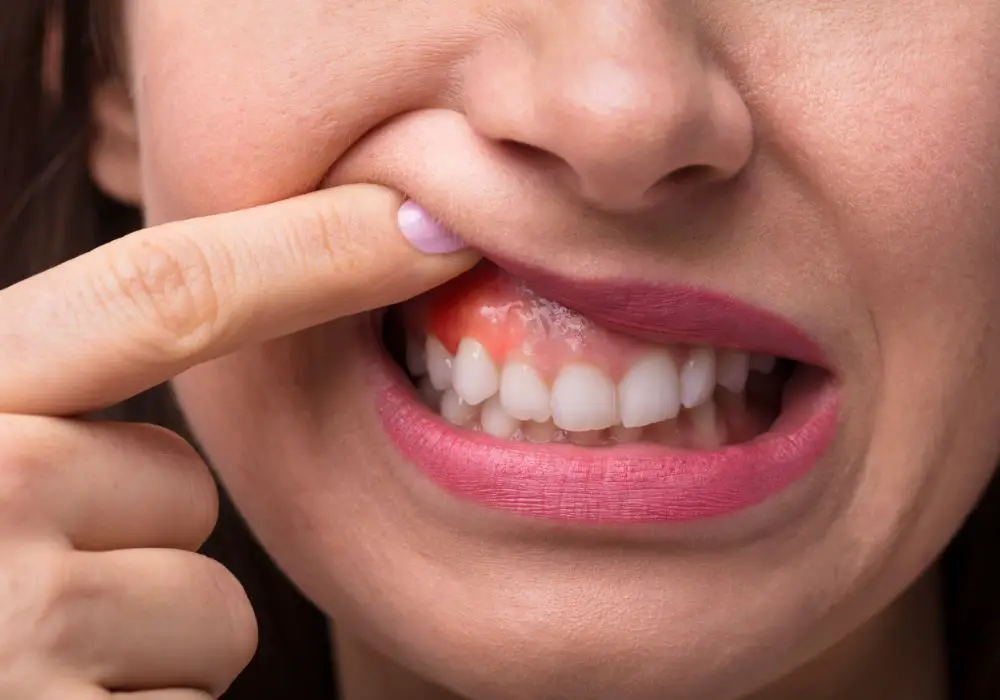
Taking preventive measures can help you avoid the development of white stuff that you can scrape off your gums. Here are some preventive measures that you can take:
Regular Dental Check-Ups
It is important to have regular dental check-ups to prevent the development of any oral health problems. Dental check-ups allow your dentist to identify and treat any potential issues before they become more serious. During your check-up, your dentist will examine your teeth, gums, and mouth to ensure that everything is healthy.
Good Oral Hygiene Practices
Good oral hygiene practices can help prevent the buildup of plaque and tartar on your teeth and gums. Plaque and tartar can lead to gum disease, which can cause white stuff to develop on your gums. Here are some good oral hygiene practices:
- Brush your teeth twice a day with fluoride toothpaste
- Floss your teeth once a day
- Use mouthwash to kill bacteria in your mouth
- Replace your toothbrush every three to four months
Healthy Diet
Eating a healthy diet can help prevent the development of white stuff on your gums. A diet that is high in sugar and processed foods can lead to the buildup of plaque and tartar on your teeth and gums. Here are some healthy foods that you can eat:
- Fruits and vegetables
- Whole grains
- Lean proteins
- Dairy products
By following these preventive measures, you can help prevent the development of white stuff on your gums. If you notice any changes in your oral health, be sure to contact your dentist right away.
When To Seek Medical Attention
Most of the time, white patches on your gums are harmless and can be removed by brushing or scraping. However, there are some situations where you should seek medical attention.
If you notice any of the following symptoms, it’s best to make an appointment with your dentist or doctor:
- The white patches are painful or bleed when you touch them.
- The patches are spreading or getting larger.
- You have difficulty swallowing or eating.
- You have a sore throat or a persistent cough.
- You have a fever or other signs of infection.
In some cases, white patches on your gums can be a sign of a more serious condition, such as oral cancer or leukoplakia. Your dentist or doctor can perform a biopsy or other tests to determine the cause of the patches and recommend appropriate treatment.
If you have a cut or wound in your mouth that is deep, long, or has ragged edges, you should also seek medical attention. In addition, if you have a puncture wound or an animal bite, it’s important to see a doctor as soon as possible to prevent infection and ensure proper healing.
Remember, it’s always better to be safe than sorry when it comes to your health. If you have any concerns about white patches on your gums or other oral health issues, don’t hesitate to contact your dentist or doctor.
Frequently Asked Questions
What causes white buildup on gums?
White buildup on gums is typically caused by a buildup of plaque, which is a sticky film of bacteria that forms on teeth and gums. Poor oral hygiene, smoking, and certain medications can all contribute to plaque buildup.
How can I remove white buildup on my gums?
The best way to remove white buildup on your gums is to practice good oral hygiene. This includes brushing your teeth twice a day, flossing daily, and using an antiseptic mouthwash. In some cases, a dental cleaning may be necessary to remove stubborn buildup.
Is white buildup on gums a sign of gum disease?
White buildup on gums can be a sign of gum disease, also known as periodontal disease. Other symptoms of gum disease include red, swollen, or bleeding gums, bad breath, and loose teeth. If you suspect you have gum disease, it’s important to see a dentist for treatment.
Can mouthwash cause white buildup on gums?
Mouthwash can cause white buildup on gums if it contains alcohol, which can dry out the mouth and lead to a buildup of bacteria. If you experience this problem, try switching to an alcohol-free mouthwash.
Why do I have white stuff in my mouth after using Listerine?
Listerine can sometimes leave a white film on the gums and tongue, which is caused by the alcohol and other ingredients in the mouthwash. This is usually harmless and can be removed by brushing your teeth or rinsing your mouth with water.
What is the white film on my gums after using mouthwash?
The white film on your gums after using mouthwash is most likely caused by the alcohol and other ingredients in the mouthwash. This is usually harmless and can be removed by brushing your teeth or rinsing your mouth with water. If the problem persists, try switching to an alcohol-free mouthwash.

